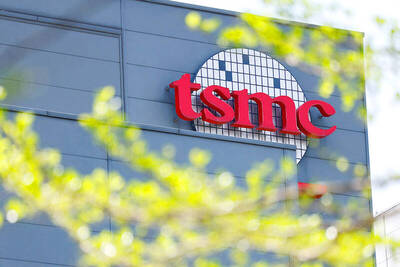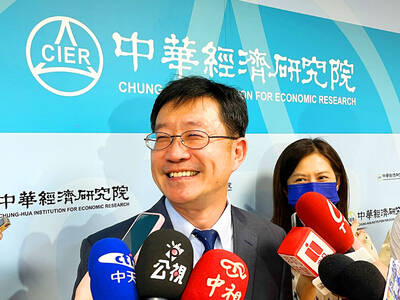The penetration of thinner and power-saving light emitting diode (LED) backlight TVs may grow slowly to 2 percent this year and to 11 percent by 2012, because the economic recession and some technological obstacles could limit the growth, Taipei-based researcher LEDinside said yesterday.
In a forecast by WitsView, a liquid-crystal-display (LCD) panel research house, about 2.28 million units out of 114 million LCD TVs would be equipped with LED backlights, replacing widely used cold cathode fluorescent lamps as the backlight source, LEDinside said.
This year, LED TVs may make up only 1 percent of overall LCD TV shipments despite expectations that a growing number of LED TVs are expected to hit the market this year, the research house said.
Samsung, the world’s biggest flat-panel TV maker, said it started selling 40-inch, 46-inch and 55-inch LED TVs last month in Europe and is scheduled to sell a full line of its LED TVs, from 32-inch to 55-inch models, in Taiwan in June.
The South Korean company said its LED TVs could save up to 40 percent in power consumption compared with LCD TVs of the same screen size.
As prices for LED TVs were about 60 percent to 80 percent higher than those of LCD TVs, it would take a while for LED TVs to gain traction, LEDinside said, adding that there were technological barriers such as heat dissipation.
Though TV manufacturers have set ambitious goals in LED TV output, LEDinside held a conservative view about the LED TV market because high-end LED TV sales would be limited by the global economic recession this year.

Six Taiwanese companies, including contract chipmaker Taiwan Semiconductor Manufacturing Co. (TSMC), made the 2025 Fortune Global 500 list of the world’s largest firms by revenue. In a report published by New York-based Fortune magazine on Tuesday, Hon Hai Precision Industry Co. (better known as Foxconn) ranked highest among Taiwanese firms, placing 28th with revenue of US$213.69 billion. Up 60 spots from last year, TSMC rose 60 places to reach No. 126 with US$90.16 billion in revenue, followed by Quanta Computer Inc. at 348th, Pegatron Corp. at 461st, CPC Corp., Taiwan at 494th and Wistron Corp. at 496th. According to Fortune, the world’s

NEW PRODUCTS: MediaTek plans to roll out new products this quarter, including a flagship mobile phone chip and a GB10 chip that it is codeveloping with Nvidia Corp MediaTek Inc (聯發科) yesterday projected that revenue this quarter would dip by 7 to 13 percent to between NT$130.1 billion and NT$140 billion (US$4.38 billion and US$4.71 billion), compared with NT$150.37 billion last quarter, which it attributed to subdued front-loading demand and unfavorable foreign exchange rates. The Hsinchu-based chip designer said that the forecast factored in the negative effects of an estimated 6 percent appreciation of the New Taiwan dollar against the greenback. “As some demand has been pulled into the first half of the year and resulted in a different quarterly pattern, we expect the third quarter revenue to decline sequentially,”

WEAKER ACTIVITY: The sharpest deterioration was seen in the electronics and optical components sector, with the production index falling 13.2 points to 44.5 Taiwan’s manufacturing sector last month contracted for a second consecutive month, with the purchasing managers’ index (PMI) slipping to 48, reflecting ongoing caution over trade uncertainties, the Chung-Hua Institution for Economic Research (CIER, 中華經濟研究院) said yesterday. The decline reflects growing caution among companies amid uncertainty surrounding US tariffs, semiconductor duties and automotive import levies, and it is also likely linked to fading front-loading activity, CIER president Lien Hsien-ming (連賢明) said. “Some clients have started shifting orders to Southeast Asian countries where tariff regimes are already clear,” Lien told a news conference. Firms across the supply chain are also lowering stock levels to mitigate

DIVERSIFYING: Taiwanese investors are reassessing their preference for US dollar assets and moving toward Europe amid a global shift away from the greenback Taiwanese investors are reassessing their long-held preference for US-dollar assets, shifting their bets to Europe in the latest move by global investors away from the greenback. Taiwanese funds holding European assets have seen an influx of investments recently, pushing their combined value to NT$13.7 billion (US$461 million) as of the end of last month, the highest since 2019, according to data compiled by Bloomberg. Over the first half of this year, Taiwanese investors have also poured NT$14.1 billion into Europe-focused funds based overseas, bringing total assets up to NT$134.8 billion, according to data from the Securities Investment Trust and Consulting Association (SITCA),